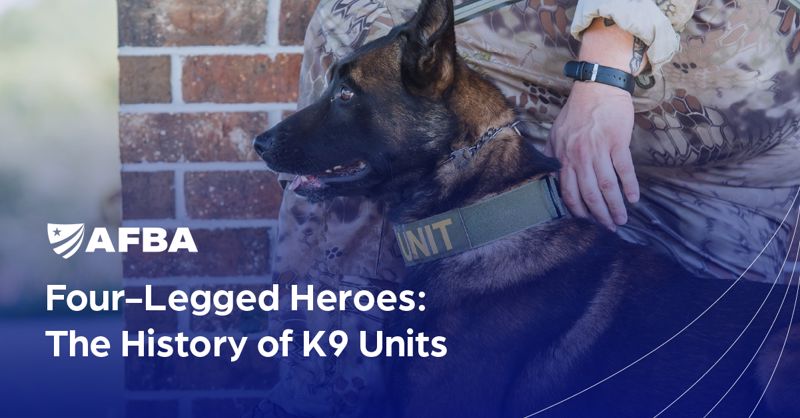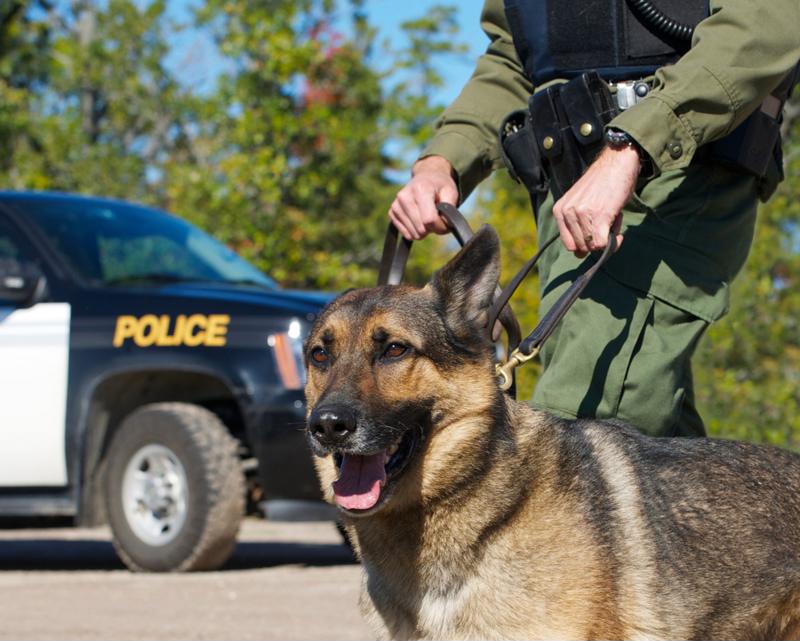Dogs are more than just pets; they've been loyal companions to humans for tens of thousands of years. In ancient times they helped us hunt, but today, they serve a wide range of roles, from our best friends to vigilant protectors who keep us safe.
Each year, March 13th is dedicated to National K9 Veterans Day — a day for recognizing and honoring the service and sacrifices of military and working dogs. It marks the official birthday of the United States K9 Corps, which was established back in 1942 for the first military dogs who served during World War II.
These dogs, and those that followed, have played critical roles in patrol, detection, search and rescue, and as loyal companions. The observance of National K9 Veterans Day is a testament to the enduring partnership between dogs and humans, particularly in the realm of national defense and public service. It's a day to reflect on the heroism of these animals and give thanks for their countless contributions to our society.

The History of the K9 Unit
The K9 unit, as we know it today, has a storied history that began long before its formal establishment. Dogs have been used in warfare and security since ancient times, aiding the military forces of Egypt, Greece, and Rome. However, the official use of dogs for military purposes in the United States began during World War II with the inception of the War Dog Program, or "K9 Corps," on March 13, 1942.
This marked the beginning of systematic training and deployment of canines for combat and other military-related tasks. The K9 Corps initially recruited civilian dogs and their owners, training these teams for various duties, including sentry, scout, and messenger roles.
Over the years, the role of K9 units has evolved significantly. In the public sphere, police forces have adopted the concept of training dogs for law enforcement tasks such as drug and bomb detection, search and rescue operations, and the pursuit of suspects. Today, these K9 units are an indispensable part of both military operations and public safety efforts, showcasing the remarkable adaptability and skill of these working dogs.
The Life of a Working Dog
Working dogs play a pivotal role in contributing to public and national security. Their keen senses, particularly hearing and smell, make them invaluable in detecting explosives, narcotics, and even certain medical conditions. Our canine companions are also often the first line of defense for national security, working tirelessly at borders, airports, and high-security events to sniff out potential threats.
The life of a K9 unit begins with rigorous training, where handlers hone their natural abilities to perform specialized tasks. This training is both physically and mentally demanding, ensuring that the dogs are prepared for the challenges they will face in the field without getting distracted.
Throughout their service, K9s form an unbreakable bond with their handlers, built on trust, respect, and mutual reliance. When these dogs retire, they often do so with the same handler or another loving family, where they can enjoy a well-deserved rest and the companionship they have earned through years of loyal service. In some cases, after their tenure in active duty, K9s can often find new ways to contribute to society — especially as the roles of working dogs are continually expanding.
As therapy dogs, they provide comfort and support to veterans and civilians alike, helping to alleviate stress, anxiety, and PTSD symptoms. As service dogs, they assist individuals with disabilities, offering them greater independence and quality of life. Whatever they get up to, K9 units continue to serve and inspire long after their official duties have ended, proving that their heroism extends far beyond the battlefield or the line of duty.

